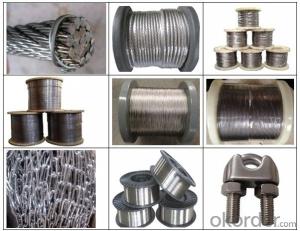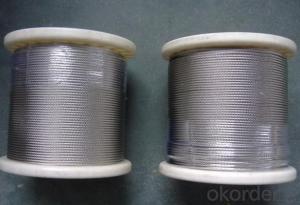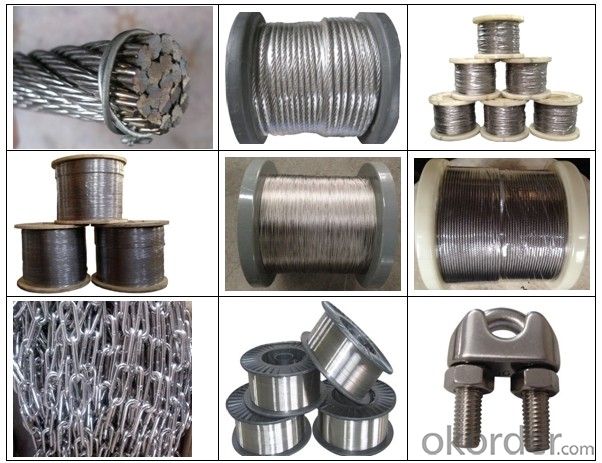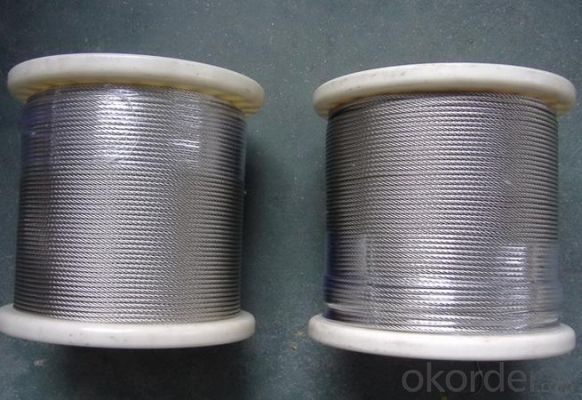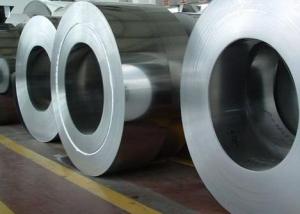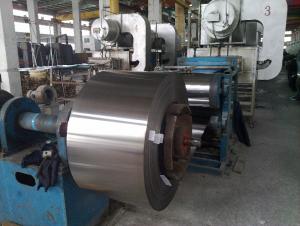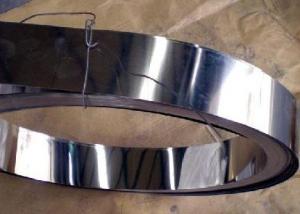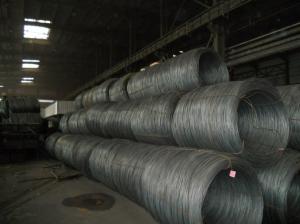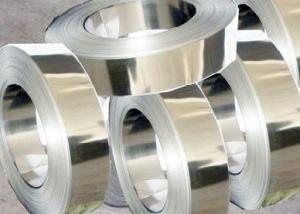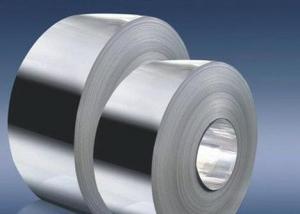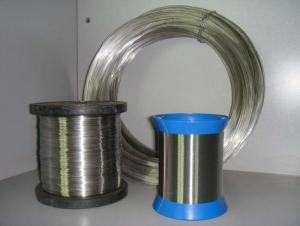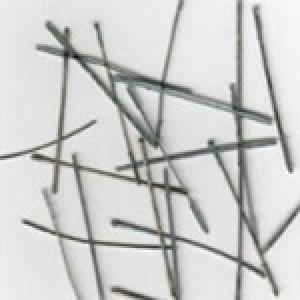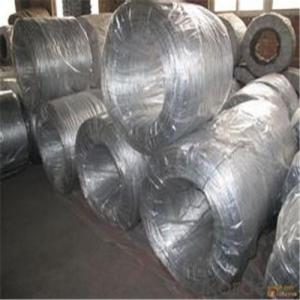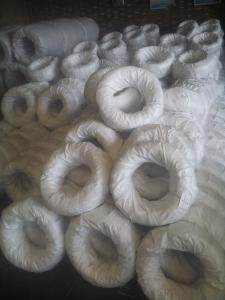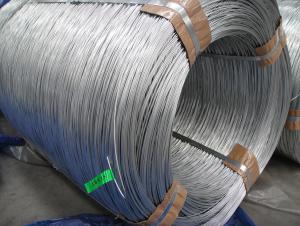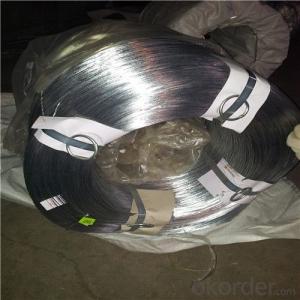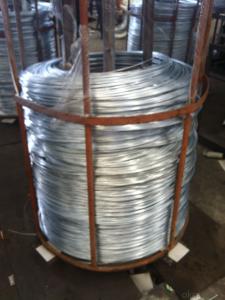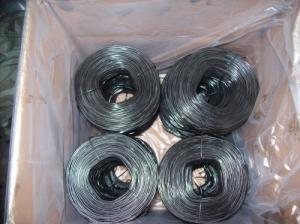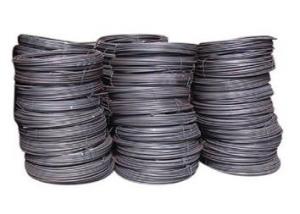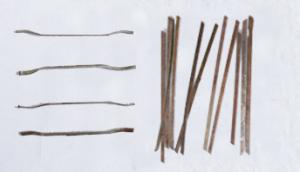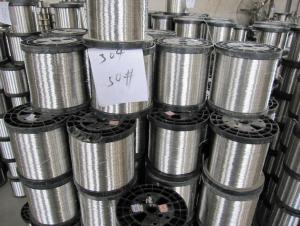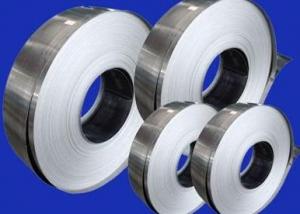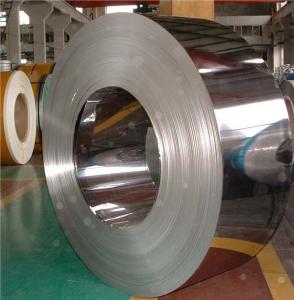Wire Galvanized Carbob Steel Wire for ACSR
- Loading Port:
- Dalian
- Payment Terms:
- TT OR LC
- Min Order Qty:
- 5 m.t.
- Supply Capability:
- 10000 m.t./month
OKorder Service Pledge
OKorder Financial Service
You Might Also Like
Specification
Wire Galvanized Carbob Steel Wire for ACSR
Quick Details
Steel Grade: | steel | Standard: | AISI, ASTM, BS, DIN, GB, JIS | Wire Gauge: | 1.24-5.50mm |
Place of Origin: | China (Mainland) | Type: | Galvanized | Application: | Manufacturing |
Alloy Or Not: | Non-alloy | Special Use: | Cold Heading Steel | Model Number: | wire galvanized steel for acsr |
Brand Name: | CNBM | wire galvanized: | wire galvanized steel for acsr |
Packaging & Delivery
Packaging Details: | Coil with plastic outside or according to customer's requirement. |
Delivery Detail: | 20 working days after receiving your order. |
Wire Galvanized Steel for ACSR
1. Material: Q195,Q235,45#,60#,65#,70#,72B,80#,82B,65Mn
2. Surface Coating: Galvanized
3. Characteristic: High tensile strength,small tolerance
Shiny surface, good corrosion prevention
4. Packing type:Spool or Coil
5. Application: Being used for stranded conductors in overhead power circuitry
6. Remarks during use and handling:
a. During transportation, handle softly and carefully, avoid bumping and damaging the steel wires. Moisture and rain prohibited. Steel wires must be stored in dry and well ventilated indoors
b. Pay attention to the direction of steel wires when paying-off. Be sure the spool or coil is rotating freely as to achieve identical tension of all the steel wires
c. In case of batch usage, the remaining should be repacked to avoid oxidizing of the surface
Technical parameters
Wire dia: 1.24-5.5mm; Tensile Strength:1290~1340Mpa
Nominal diameter (mm) | Tensile Strength | Stress at 1% Elongation | Twist | Elongation | Standard |
mm | Mpa | Mpa | Times/360° | Lo=250mm | |
1.24~2.25 | ≥1340 | ≥1170 | ≥18 | ≥3.0% | As per GB,EN,IEC,JIS,ASTM standard, as well as customer's request |
2.25~2.75 | ≥1310 | ≥1140 | ≥16 | ≥3.0% | |
2.75~3.00 | ≥1310 | ≥1140 | ≥16 | ≥3.5% | |
3.00~3.50 | ≥1290 | ≥1100 | ≥14 | ≥3.5% | |
3.50~4.25 | ≥1290 | ≥1100 | ≥12 | ≥4.0% | |
4.25~4.75 | ≥1290 | ≥1100 | ≥12 | ≥4.0% | |
4.75~5.50 | ≥1290 | ≥1100 | ≥12 | ≥4.0% |
NOTE:Providing engineer design as per cstomer's request.
Picture
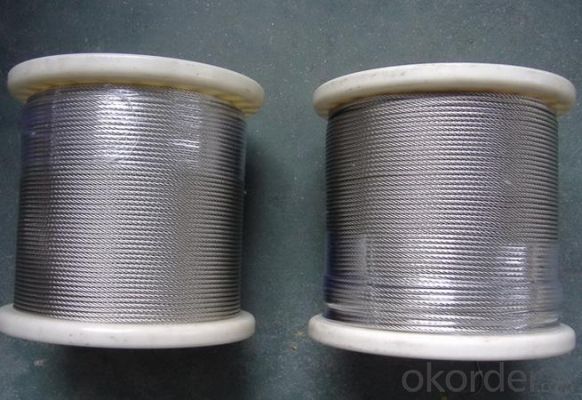
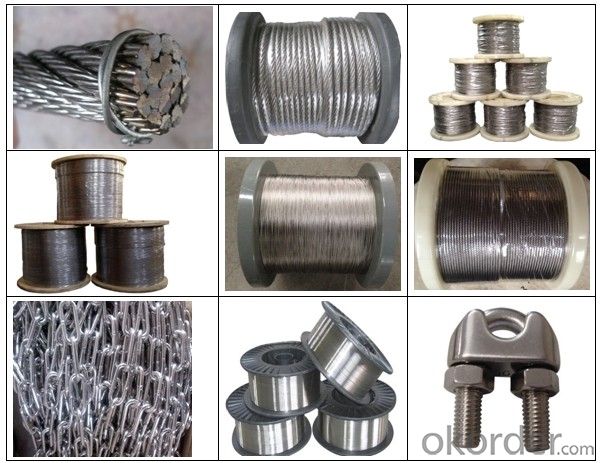
- Q: What are the different packaging materials available for stainless steel wire?
- Some common packaging materials for stainless steel wire include plastic spools, wooden spools, cardboard boxes, and metal drums. These materials provide protection and ease of handling during transportation and storage of the wire.
- Q: What are the common packaging options for stainless steel wire?
- Stainless steel wire can be packaged in various ways, such as spools, coils, reels, and bundles. Spools are cylindrical containers that neatly hold the wire, enabling easy dispensing and usage. Coils, on the other hand, are similar to spools but larger and may lack a container. Reels, being larger and heavier, are commonly employed in industrial settings where longer wire lengths are required. Lastly, bundles are packages that bundle together multiple smaller wire lengths, usually secured with straps or packaging material. These packaging options cater to specific customer needs, considering factors such as convenience, storage, and transportation.
- Q: Is stainless steel wire suitable for wire rope fittings?
- Indeed, stainless steel wire proves to be fitting for wire rope fittings. Renowned for its robustness, endurance, and resistance to corrosion, stainless steel wire stands as an exceptional option for withstanding hefty burdens and adverse environmental circumstances that wire rope fittings encounter. Moreover, stainless steel wire rope fittings present exceptional flexibility, facilitating effortless installation and adjustment. Furthermore, stainless steel wire finds frequent usage in domains where sanitation and cleanliness hold significance, such as the food and medical industries. In conclusion, stainless steel wire emerges as a dependable and appropriate material for wire rope fittings.
- Q: What are the different types of stainless steel wire springs used in the automotive industry?
- There are several different types of stainless steel wire springs that are commonly used in the automotive industry. These springs play a crucial role in various mechanical components, providing support, flexibility, and resilience to ensure the smooth functioning of automotive systems. Some of the most commonly used types of stainless steel wire springs in the automotive industry include: 1. Compression Springs: Compression springs are the most widely used type of spring in the automotive industry. They are designed to resist compression forces and are commonly found in suspension systems, engine valves, and braking systems. 2. Torsion Springs: Torsion springs are used to generate rotational forces or torque. They are often found in automotive door handles, hinges, and suspension systems, where they provide the necessary resistance to rotational movement. 3. Extension Springs: Extension springs are designed to resist stretching forces and are commonly used in automotive applications such as seat belts, hood latches, and trunk hinges. They provide the necessary tension to keep various components in place. 4. Constant Force Springs: Constant force springs are widely used in the automotive industry due to their ability to provide a consistent force throughout their entire range of motion. These springs are commonly used in fuel injection systems, throttle control mechanisms, and HVAC systems. 5. Wave Springs: Wave springs are used in applications where space is limited but a high load capacity is required. They are commonly used in automotive valves, clutch mechanisms, and shock absorbers. 6. Belleville Washers: Belleville washers, also known as conical or disc springs, are used in automotive applications where a high level of spring force is required in a limited space. These springs are commonly found in automotive clutches, transmissions, and braking systems. Each of these stainless steel wire springs offers unique properties and characteristics that make them suitable for specific automotive applications. The choice of spring type depends on factors such as load requirements, space limitations, durability, and cost-effectiveness.
- Q: What are the different forms of stainless steel wire?
- Stainless steel wire comes in various forms, each with its own distinct qualities and uses. Some commonly used forms include: 1. Round wire: This is the most widely used and basic type of stainless steel wire. It is available in different diameters and finds applications in wire mesh, springs, and fasteners. 2. Flat wire: As the name suggests, this wire is flattened in shape. It is often employed in applications that require a thin and wide profile, like electrical connectors, conveyor belts, and automotive components. 3. Shaped wire: Shaped wire refers to stainless steel wire that has been molded into specific shapes or profiles, such as square, rectangular, or hexagonal. It is commonly used in specialized applications like architectural mesh, filtration systems, and medical devices. 4. Welding wire: Designed exclusively for welding purposes, this type of wire is used to join stainless steel pieces together. It is available in different forms, including solid wire, flux-cored wire, or metal-cored wire, depending on the welding technique employed. 5. Spring wire: Heat-treated to attain the desired flexibility and springiness, spring wire is extensively used in the manufacturing of springs, clips, and other elastic components. 6. Fine wire: Characterized by its small diameter, typically ranging from 0.001 to 0.040 inches, fine wire is commonly used in applications that demand precision and delicacy, such as jewelry, electronics, and medical devices. These examples represent just a fraction of the various forms of stainless steel wire available. The choice of wire form depends on specific application requirements, including strength, flexibility, corrosion resistance, and aesthetic considerations.
- Q: Is stainless steel wire suitable for conveyor belts?
- Conveyor belts can indeed be made with stainless steel wire. Stainless steel wire possesses remarkable qualities like exceptional strength, durability, and resistance to corrosion, making it an optimal selection for conveyor belt utilization. This wire can endure immense loads, elevated temperatures, and unforgiving surroundings without succumbing to rust or degradation. Moreover, maintaining a hygienic and efficient conveyor system is effortless with stainless steel wire due to its easy-clean nature. Its adaptability allows it to be employed across diverse industries like food processing, pharmaceuticals, automotive, and mining. In conclusion, stainless steel wire serves as a dependable and enduring solution for conveyor belts.
- Q: How does stainless steel wire perform in cryogenic environments?
- Stainless steel wire performs exceptionally well in cryogenic environments. Due to its unique properties, stainless steel exhibits excellent resistance to low temperatures, making it an ideal material for use in cryogenic applications. Firstly, stainless steel wire retains its strength and mechanical properties even at extremely low temperatures. Unlike other materials that may become brittle or lose their structural integrity in cryogenic conditions, stainless steel maintains its toughness and ductility. This is crucial in applications where the wire needs to withstand high stresses and loads. Additionally, stainless steel wire has excellent corrosion resistance, which is especially important in cryogenic environments. Low temperatures can exacerbate corrosion issues, as moisture and other contaminants can freeze and cause damage to the wire. However, stainless steel's inherent resistance to corrosion ensures that it remains durable and reliable even in these challenging conditions. Moreover, stainless steel wire offers good thermal conductivity, ensuring efficient heat transfer in cryogenic applications. This property is particularly beneficial in systems where temperature control is critical, as stainless steel wire can help maintain the desired temperature by facilitating heat exchange. Furthermore, stainless steel wire is highly versatile and can be tailored to suit specific cryogenic applications. It can be manufactured in various grades and with different surface finishes to meet the specific requirements of different environments. This flexibility allows stainless steel wire to be used in a wide range of cryogenic applications, including aerospace, medical, and scientific research. In summary, stainless steel wire performs exceptionally well in cryogenic environments. It maintains its strength, toughness, and corrosion resistance even at extremely low temperatures. Its thermal conductivity and versatility make it an ideal choice for various cryogenic applications, ensuring reliability and durability in these demanding conditions.
- Q: Can stainless steel wire be used for making wire bird cages?
- Yes, stainless steel wire can be used for making wire bird cages. Stainless steel is a durable and rust-resistant material, making it suitable for bird cages as it ensures the safety and well-being of the birds.
- Q: Can stainless steel wire be used for wire rope connectors?
- Yes, stainless steel wire can be used for wire rope connectors. Stainless steel is a strong and durable material that is resistant to corrosion, making it suitable for use in wire rope connectors.
- Q: Can stainless steel wire be used for wire rope clips?
- Yes, stainless steel wire can be used for wire rope clips. Stainless steel is a highly durable and corrosion-resistant material, making it suitable for various applications including wire rope clips. These clips are used to secure the ends of wire ropes and prevent them from unraveling or slipping. By using stainless steel wire rope clips, you can ensure a strong and secure connection while also benefiting from the anti-corrosive properties of stainless steel, which makes them suitable for outdoor or marine environments.
Send your message to us
Wire Galvanized Carbob Steel Wire for ACSR
- Loading Port:
- Dalian
- Payment Terms:
- TT OR LC
- Min Order Qty:
- 5 m.t.
- Supply Capability:
- 10000 m.t./month
OKorder Service Pledge
OKorder Financial Service
Similar products
Hot products
Hot Searches
Related keywords
